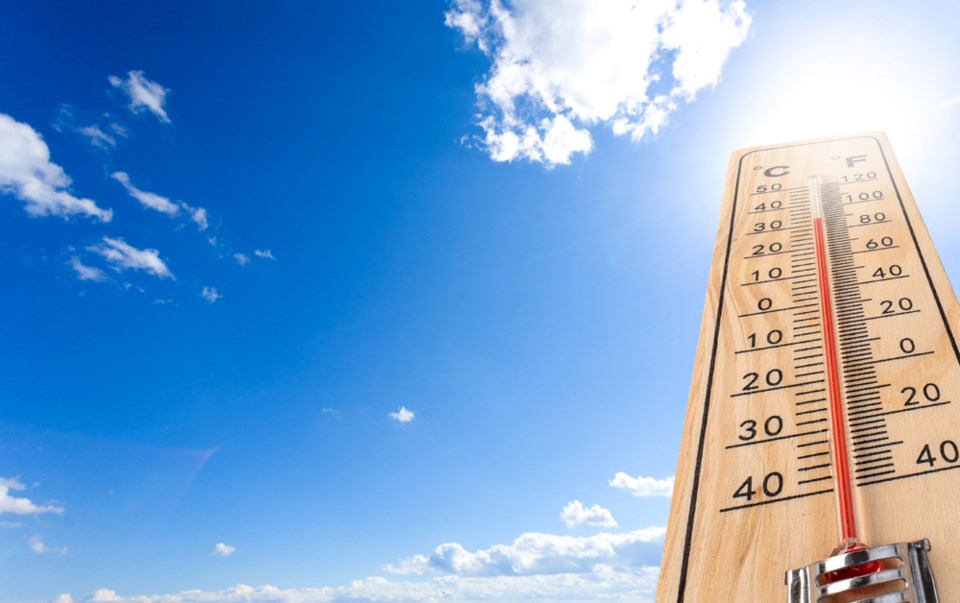New Westminster parents should brace themselves for the possibility of school closures in the event of future heat waves.
School District 40 has been grappling with the issue of overheated classrooms since the heat wave that hit the region in mid-May saw temperatures skyrocket in local schools.
The problem was particularly acute in the district’s two newest schools, New Westminster Secondary and Skwo:wech Elementary, whose designs feature a great deal of interior and exterior glass, and in portable classrooms around the district.
No New Westminster schools have air conditioning.
Janet Kinneard, vice-president of CUPE Local 409, which represents SD40 support staff, said temperatures in some classrooms soared past 33 C.
“These are classrooms students are working in — between 28 degrees and 33 degrees is very concerning for the health and well-being of the students,” she told trustees at a school board meeting on Tuesday night (May 23).
Laura Kwong, chair of the New Westminster district parent advisory council, said DPAC has been hearing from families around the district with concerns over the untenable heat in classrooms.
“Ten years ago, an extreme heat event in May or October were unheard of,” she said. “But they are commonplace now, and the impacts to the health and safety of students and staff from these now commonplace events must be addressed.”
'New reality': Warmer weather puts pressure on schools
Superintendent Karim Hachlaf said the district is looking at many ways to help cope with the issue.
“We are experiencing a new reality, and whether we might not receive or undergo heat domes to the same extent, the recent heatwave that we had with high 20s certainly created classroom environments that definitely were not conducive to the learning environment that we need,” he said.
He said the district is using schools’ mechanical systems to deal with the heat as effectively as possible — such as, for instance, purging the hot overnight air out of schools in the morning to start the day with cooler air. But he said that, without mechanical air conditioning, the existing systems can only do so much to lower temperatures.
Secretary-treasurer Bettina Ketcham noted some district schools have air source heat pumps — which aren’t air conditioners but do provide cooling capability. During the recent heat wave, she noted, the district was able to bring school temperatures in some cases down from 29 C to 24 or 25 C.
But not all schools have them; they’re at Fraser River Middle School, Qayqayt Elementary School, Skwo:wech Elementary School, Queensborough Middle School and soon to be at Glenbrook Middle School. And Ketcham said that in the event of extreme heat, such as the temperatures the region saw during the heat dome of 2020, the heat pumps wouldn’t be sufficient.
Hachlaf noted district staff met with Ministry of Education staff last week, and they’re working to determine what cooling options may be available for Skwo:wech and NWSS. He said he’s “encouraged” by those conversations but has no specifics to offer yet.
But Hachlaf assured trustees and parents that cooling options will be incorporated into the district’s next school: the in-progress Queen Elizabeth Elementary expansion in Queensborough.
Cooling portables will be challenging and expensive: SD40
As for portables, Ketcham said the real long-term solution is to get students out of portables altogether and into school buildings, but that will require more school capacity.
Meanwhile, she said, portables pose a challenge because any effective cooling solution — such as individual air conditioning units or portable air source heat pumps — come at a “fairly substantial cost” that would need to be funded out of the district’s operational budget.
Matt Brito, the district’s director of facilities, said heat pumps in individual portables would be the most effective way to cool them down but warned such a move would require improvements to electrical service and a significant investment of money — to the tune of an estimated $10,000 to $15,000 per portable for each of the district’s 45 to 50 portable classrooms.
In the meantime, the district uses as many strategies as possible to keep schools cool during hot weather — including using fans, closing blinds, and minimizing use of lights and electronics. When necessary, it moves classes into cooler spaces such as shady outdoor areas, gyms and libraries.
Now, Hachlaf said, the district is working on updating its administrative procedures so it clearly defines what would happen in the “rare, emergent” case when extreme heat forces the district to close schools altogether.
“Now that’s an extreme case, but it’s important that our students, our staff, our parents have a better understanding of these protocols, that they’re formalized, much like we do with winter weather procedures,” he said.
Those revisions to the administrative procedures will be back in front of the board soon, he said.
📢 SOUND OFF: Are you a student in New Westminster schools? Do you have a child in a hot classroom? What do you think needs to be done about heat in schools? Let us know — send us a letter.




